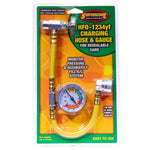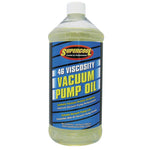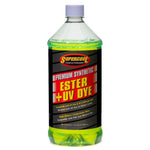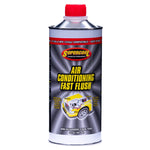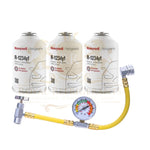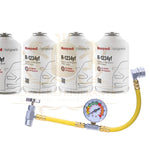You have no items in your shopping cart.
Everything You Need to Know About the Substitute for Freon R22 in HVAC and Automotive Applications
For decades, Freon R22 was the go-to refrigerant in air conditioners and cooling systems. But as environmental awareness grew, R22’s ozone-depleting potential made it a target for global phase-out regulations. Today, HVAC technicians and car owners alike are asking the same question:
What’s the best substitute for Freon R22 — and how does it affect performance and cost?
Let’s break it down.
🧊 Why Was Freon R22 Phased Out?
Freon R22 (also known as HCFC-22) is a hydrochlorofluorocarbon — a refrigerant known to harm the ozone layer and contribute to global warming. Under the Montreal Protocol, countries began phasing it out, and by January 1, 2020, R22 production and import were banned in many regions, including the United States.
That means:
You can no longer buy new R22 legally.
Only recycled or reclaimed R22 can be used to service old systems.
The price of R22 has skyrocketed, making replacements a smart and necessary move.

⚙️ Top Substitutes for R22 in HVAC Systems
Several modern refrigerants have entered the market to fill R22’s place. The most popular options include:
1. R-407C
Composition: Blend of R32, R125, and R134a
Best for: Residential and commercial air conditioners
Pros: Closest performance to R22, energy-efficient, environmentally safer
Cons: Slightly lower cooling capacity and requires complete system evacuation before retrofit
2. R-422D
Best for: Older R22 systems where complete retrofit isn’t practical
Pros: Drop-in replacement, no major equipment changes required
Cons: Slightly reduced efficiency, may affect lubricant compatibility
3. R-438A (MO99)
Best for: Quick retrofits with minimal downtime
Pros: Compatible with mineral oil and POE oil, easy transition
Cons: May have small capacity differences compared to R22
4. R-407A and R-407F
Best for: Commercial refrigeration and medium-temp systems
Pros: Lower global warming potential (GWP) than R22
Cons: Not ideal for low-temperature freezers
🚗 Substitutes for R22 in Automotive Applications
In automotive air conditioning, R22 is rarely used today, but some older specialty or heavy-duty vehicles may still contain it. The modern standard for most cars is R-134a, while the latest generation systems use R-1234yf, which offers:
Low global warming potential
Better fuel efficiency
Environmentally safe performance
If your vehicle’s AC system still relies on R22 (uncommon but possible in older imports), conversion kits and professional retrofits are available to safely transition to R-134a or R-1234yf.
💡 Key Considerations Before Retrofitting
Before switching refrigerants:
Check system compatibility — some substitutes require new seals or oil.
Always have a certified technician handle refrigerant recovery and charging.
Label your system clearly after retrofit to avoid future confusion.
Pro tip: Never mix R22 with replacement refrigerants — it can cause compressor failure or pressure imbalance.
🌎 Environmental and Economic Benefits
Switching away from R22 isn’t just mandatory — it’s smart:
Lower carbon footprint
Reduced energy costs
Future-proof system
Easier maintenance and refrigerant availability
Modern refrigerants are designed with sustainability and efficiency in mind — giving you better performance and peace of mind.
🔧 Final Thoughts
The end of Freon R22 marks a new chapter for both HVAC and automotive industries. While the transition may require an upfront investment, the long-term benefits — cleaner air, stable performance, and compliance with environmental laws — make it well worth it.
So, whether you’re upgrading your home AC or maintaining a fleet of vehicles, understanding your R22 substitutes will help you make the most responsible and cost-effective choice.
 English
English

